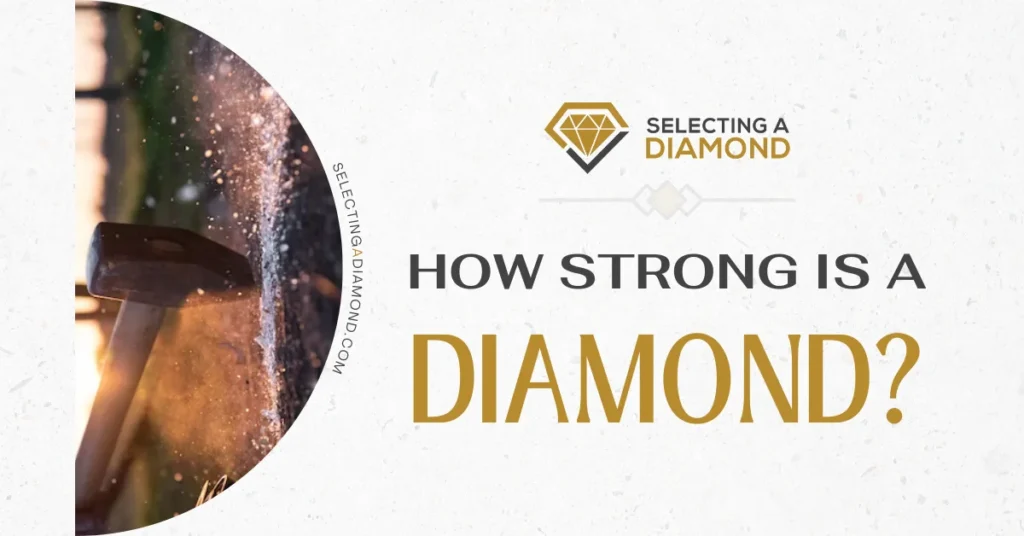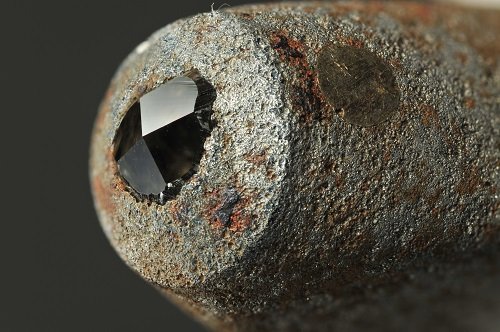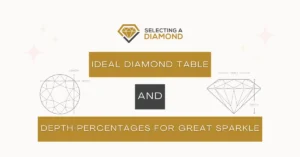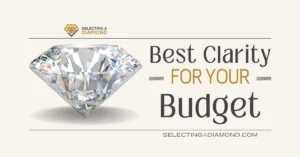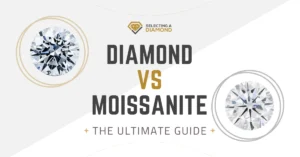The mystique surrounding diamonds isn’t just about their gleam but their formidable strength too. It’s often said, only a diamond can cut another diamond. Let us discuss the diamond strength.
Their unyielding nature is all the more astonishing when you stumble upon an exquisite gem on Blue Nile or come across a captivating sparkle on James Allen. The thought probably crosses your mind:
If I invest in this magnificent diamond, is there a chance it could break?
Diamonds reign as the hardest known material on our planet, earning a perfect 10 on the Mohs scale, which we’ll delve into in a bit. Their hardness is such that only a fellow diamond can play the role of a cutter to shape them into the shimmering marvels we adore.
But does this legendary hardness render them unbreakable? Does the title of “the hardest” shield them from being shattered by any other mineral?
Well, a diamond’s title as the strongest mineral doesn’t equate to it being indestructible. And by the end of this piece, we’ll unravel the realities of a diamond’s physical robustness and the technical depth of its hardness.
This discussion isn’t just a dive into the fascinating world of gemology but a reassurance for those worrying over their cherished diamond rings weathering through falls, accidental knocks, or the wear and tear of daily use. The enigmatic strength of diamonds is indeed a subject as fascinating as the sparkle that dances on their facets.
Firstly,
What Are Diamonds Made From?
For ages, diamonds have worn the crown as the hardest and strongest jewels of the Earth, up until science unveiled a new contender – Q carbon.
Yet, despite this revelation, the unmatched prowess of diamonds continues to fascinate, with their ability to etch glass and carve their own kind, all while maintaining their regal stature unscathed.
Isn’t it mesmerizing? The backbone of a diamond’s strength lies in its genesis and its impeccably structured form.
Diamonds are born from carbon, a simple element, yet when embraced by the ferocious heat and relentless pressure found about 87 to 120 miles deep in Earth’s mantle, it transforms into a spectacle. This metamorphosis doesn’t happen overnight, but over a staggering 1 to 3.3 billion years!
It’s the fury of heat and the pressure that coerces the carbon molecules into a new avatar, binding them together into a network so tight, the molecules stand immobilized. This enthralling union of molecules, known as covalent bonding, is the cornerstone of a diamond’s mightiness.
We’ve brushed up against some heavy science there, so let’s veer back to the enthralling narrative of diamond’s robustness.
The hard facts indeed showcase the invincible nature of diamonds, but it’s their blend of beauty and strength that has enthralled humanity across ages. As we admire a diamond’s sparkle, we’re also in reverence of the unfathomable journey and the fierce transformation that earmarks every facet of these celestial stones.
How Strong is a Diamond?
The very name ‘Diamond’ springs from a Greek origin, translating to the term ‘unbreakable’, painting a vivid image of its enduring nature.
The lore of a diamond’s strength becomes more tangible when we venture into the realm of Mohs scale of mineral hardness. Here, diamonds secure a perfect score of ten out of ten.
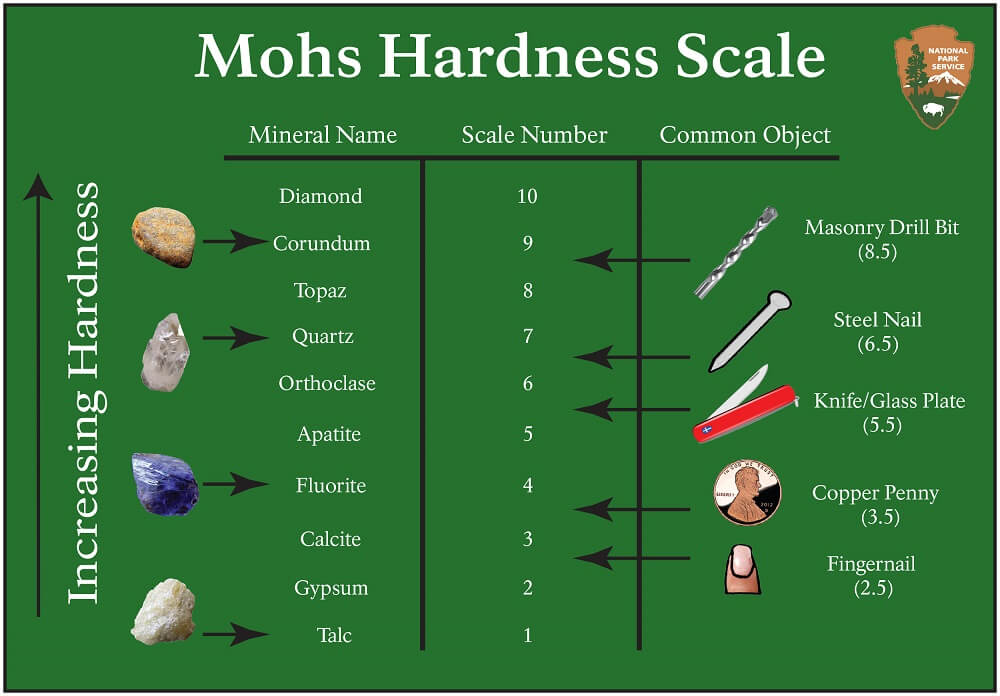
The story of Mohs scale dates back to 1812, credited to the intellect of Frederick Mohs, a revered mineralogist and geologist from Germany.
To paint a clearer picture, let’s draw parallels with some familiar characters from our daily lives. The humble steel nail, a common resident of our toolboxes, stands at 6.5 on this scale.
Transitioning to a sturdier companion, the masonry drill bit we summon to pierce through walls, it holds a rank of 8.5. Yet, when the diamond makes its entry, it clinches a flawless ten.
This narrative casts a spotlight on the unyielding nature of diamonds, juxtaposed against other minerals we encounter in our mundane routines. The crescendo of this tale nudges us to the edge of curiosity—does this unparalleled ‘strength’ render a diamond unbreakable?
Let’s delve deeper into this facet of the diamond’s narrative, and unveil what lies beneath the sheen of invincibility.
Are Diamonds Breakable?
Now that we’re clear on the strength of a diamond, it’s only fair to start questioning its toughness and durability next! Can it be broken with a hammer? Does it break if it drops down on the floor?
Does an angry throw against the wall do the trick? (or maybe a car running over it?), or even just the basic daily use of diamonds (and/or rings).
Spoiler alert: The above are theoretical suggestions and you shouldn’t try to do this on your diamond to test if it breaks or not! Keep your precious diamonds safe and sound in your jewelry box.
Let’s think about it this way: If you hit a steel nail by the wall, will the nail break or the wall will be scratched? Well, the diamond in your hand is still way stronger than this steel nail.
Diamonds are pretty tough, and you really need to stop worrying about mistakenly breaking your diamond! This is because cutting a diamond takes a lot of pressure, skill, precision, and the right equipment.
Despite the fact that they’re pretty hard and resistant to pressure, they are not unbreakable as the translation of their Greek name implies. If they were, it would be utterly impossible for diamond cutters to cut them into different sizes and shapes; to be used for jewelry!
But does this “breaking” happen due to regular daily usage of the diamond? Definitely no! Keep in mind that we’re talking about the diamond itself, not the ring, a tough hit with a door or a wall “might” leave some scratches on the ring itself, no doubt!
So how exactly are diamonds cut?
Since Diamonds are that Strong, How are they Cut & Shaped?
To start, let’s agree that diamond cut is different from a diamond shape, a lot of people refer to the shape as the cut, while it’s not. Diamond cut refers to the proportions of the parts of the diamond and how well the diamond reflects light, whereas shape is how a diamond looks like.
There are different grading systems to determine a diamond cut, however, the most common and agreed-upon one is the cut chart created by GIA since it’s known to be the best diamond certification lab.
GIA Cut Grading Chart subdivides diamond cut into 5 grades: Poor, Fair, Good, Very Good, and Excellent (AKA Ideal cut). However, for the shapes, we have round, princess, and so on.
We believe it’s clear now; cut vs. shape! So, back to the question.
There are essentially two methods of cutting diamonds: the cleaving method and the cutting method.
The cleaving method focuses on cutting large diamonds that are freshly extracted from mines; into smaller diamond sizes. This is also known as rough cuts, and the smaller diamonds can be formed into jewelry.
The Cutting method is used for slicing the diamonds into their final sizes, and most importantly, the diamond cut (which will determine how it will sparkle as a result!).
When cutting diamonds, fine sharp knives (or lasers) are used. They’re considered perfect choices for the sizing of the diamonds. These knives (or lasers) always produce flawless cuts. Most diamond cutters also have a better effective way to cut diamonds; AKA using diamond saws to cut diamonds!
You should also know that the diamond cutting process goes through multiple stages and can only be perfected by diamond cutters with the requisite skill and experience.
The first stage is the rough cut. Next, is the shaping of the diamonds, then, the polishing of the diamonds, and finally, there is the setting of the diamonds.
Each stage can take quite some time before it gets to the setting stage and if the diamond cutter is not so skilled or experienced, improperly cut diamonds can be produced.
And since the cut determines the amount of light the stone is able to reflect (the higher the reflection, the better the performance, and the more need for a higher cut grade!), an improperly cut diamond will result in a diamond with very poor sparkle and scintillation!
As you can see, the stone goes through a lot of processes before it can be rested on its setting; which takes some time. However, if breaking a diamond was easy, it wouldn’t take that long for the expert cutter to cut, polish, and shape it.
Now, a lot of people might be wondering if the cut has anything to do with the breakability of a gem? Let’s take a look.
Is it Possible to Break a Poor Cut Diamond?
It’s often said that a diamond is forever, owing to its remarkable hardness. However, diamonds can indeed chip or crack if subjected to a harsh blow, particularly in the case of a poorly cut diamond. So, is it possible to break a poorly cut diamond? The answer is yes, albeit with some qualification.
Diamonds -as explained above- are made from carbon which has been subjected to intense pressure and heat and the molecules merge together thereby making them strong. This strength is retained irrespective of the cutting process diamonds go through. With that being said, an improperly cut diamond does not make it weaker than a properly cut one.
It is in fact still unbreakable unless the right tools are engaged in the cutting procedure. Therefore, even if your diamond is improperly cut, you have no reason to worry about it getting broken for any reason whatsoever because accidentally breaking this gemstone is nearly impossible.
Yes, the cut has nothing to do with strength, however, “some” particular inclusions do! Long cracks; as in a crack in the diamond’s body from top to bottom might make the diamond more vulnerable to getting split (broken) into halves.
Can You Break a Diamond with a Hammer?
Diamond chipping can occur to almost any diamond (and here is a reference to this from GIA), but only under certain (and unusual) circumstances do these diamonds be broken!
Usually, someone smashing something with a hammer is pretty damaging. However, human physical power using a hammer to hit a diamond is not even compared to the diamond hardness itself!
You can search this on YouTube actually; you’ll see some folks who tried this and did it: smashing the diamond from its culet.
Two things to mention here so you don’t worry about your diamond:
- Chipping can be fixed, therefore, even if your diamond got chipped, you can take it to a jewelry store and they can get it fixed for you.
- Your diamond will NEVER get hit with power high enough to smash it, so don’t worry, your diamond is safe!
Diamond Strength: Final Word
Wrapping this up, diamonds indeed are FOREVER. Irrespective of the presence of Q carbon which is a combination of carbon, graphite, and diamond, regular diamonds (that are extracted from the mines) are extremely strong and are indestructible.
No wonder why they are consistently used as a symbol of everlasting love!
They never depreciate in value, and they are tough as hell. They can also only be split by skilled diamond cutters using fellow diamonds, lasers, or fine sharp knives.
Still not sure where to buy your diamond?
We always recommend shopping diamonds online and created a Full guide to shop diamonds like a Pro.
Among online retailers, here are our favorite stores click their logo to visit store
-
James Allen:
Our favorite online store, best diamond imaging technology available today, comes with the largest collection with more than half a million loose diamonds.
-
Blue Nile:
Widest collection of loose diamonds of all sizes, great imaging technology for most of their inventory (hundreds of thousands of diamonds), great customer support.
-
Whiteflash:
Home Of A CUT ABOVE® Super Ideal Diamonds, they stand out from the crowd by offering premium diamonds cuts, tailored to those who love the details, at great prices too.

